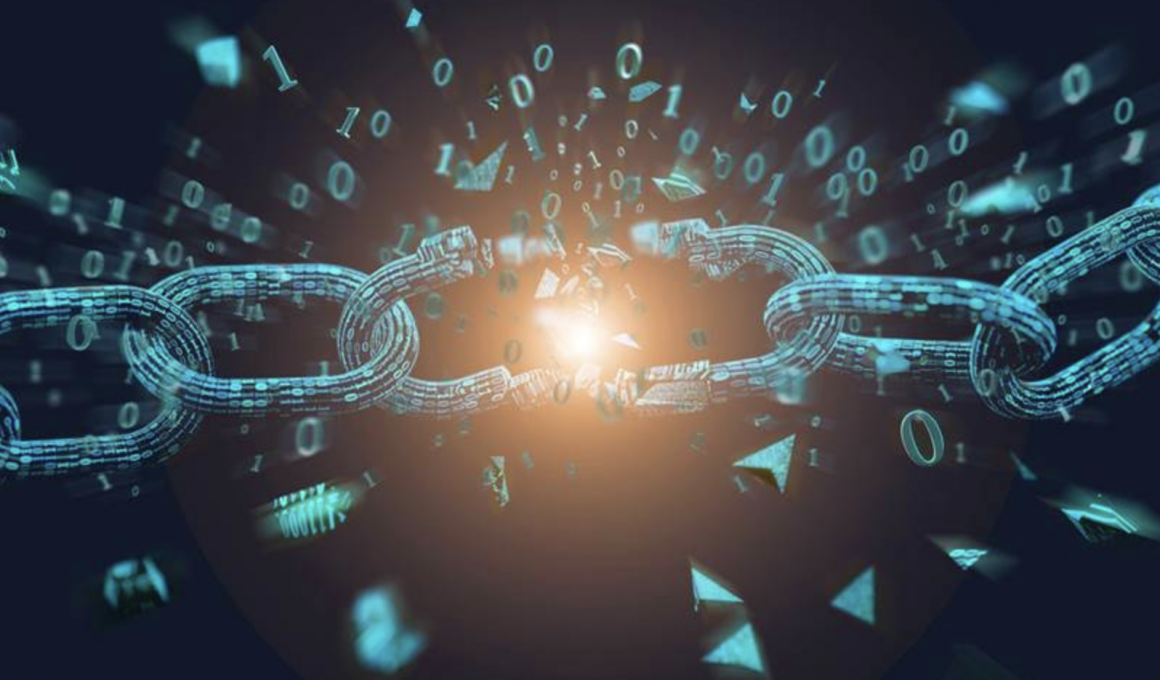The famous “Move fast and break things” approach helped to grow the Web2 market cap to an all-time high of 15 trillion dollars. But the same approach may bring the total market cap of Web 3 to zero. Here are the reasons why “Move fast and break things” won’t work with Web3.
What is the meaning of “Move fast and break things” ?
“Move fast and break things” is a philosophy that emphasizes the importance of speed and innovation in the pursuit of progress. It encourages taking bold risks and not being overly concerned with potential mistakes or failures. This developmental philosophy is based on the belief that the benefits of rapid experimentation and learning outweigh the costs.
This approach was embraced by Facebook in its early days as a way to quickly develop and test new ideas and stay ahead of the competition.
There are a few reasons why the “move fast and break things” approach may be particularly valuable for early-stage startups.
First, the “move fast and break things” philosophy is particularly valuable in the early stages of a project when there is a lot that is unknown and a need for flexibility and adaptability. It promotes rapid experimentation and iteration, which can help a team identify the most promising path forward more quickly.
Second, this approach can help a team stay agile and responsive in the face of uncertainty and competition, enabling them to move quickly and seize opportunities as they arise. This is particularly valuable in the early stages of a project when it is important to establish a foothold in the market or take advantage of opportunities before they are lost.
Finally, the “move fast and break things” approach can also be a way to foster a culture of innovation and risk-taking within an organization. By encouraging team members to take bold action and not be too concerned with the potential for mistakes or failures, it can create an environment that is conducive to creativity and experimentation.
How Facebook leveraged this developmental philosophy for its growth
When Facebook was first starting out, there were indeed concerns that it could be overwhelmed by more prominent and more established companies like MySpace and Google.
When faced with fierce competition from industry giants, Facebook knew it had to take bold action to survive. The company adopted the innovative strategy of ‘move fast and break things,’ which allowed it to experiment and iterate on new ideas rapidly. This approach proved to be incredibly effective.
One key metric that Facebook has tracked over the years is monthly active users (MAUs), which reflects the number of people who are actively using the platform each month. This metric is important because it shows the size of Facebook’s user base and helps the company understand how well it is retaining users.
As Facebook’s user base has grown, the company has been able to increase its revenue and profitability, which has in turn driven the growth of its share price.
This strong link between user growth and financial performance has provided Facebook with strong incentives to do whatever it takes to drive user growth. As a result, Facebook has become a dominant player in the tech industry.
The incredible success of Facebook has inspired many other tech companies to focus on speed and experimentation in order to achieve a hyper-growth phase and gain an edge over their competition. In Silicon Valley, it became a trend for companies to embrace a culture of rapid prototyping and iteration in order to move quickly and test new ideas.
Unfortunately, Facebook didn’t realize that moving fast can break things
The “move fast and break things” motto has been controversial at times, and there have been instances where Facebook’s rapid experimentation has had unintended consequences or led to negative outcomes.
Here’s a list of the major security Breaches at Facebook
2013: 6 Million accounts breached
Source: https://www.reuters.com/article/net-us-facebook-security-idUSBRE95K18Y20130621
2014: Cambridge Analytica’s Unauthorized Access to 50 million Facebook Users’ Private Information
Source: https://www.theguardian.com/news/2018/mar/17/cambridge-analytica-facebook-influence-us-election
March 2019: Facebook exposes 600 million passwords belonging to hundreds of millions of users.
April 2019: More than 540 million Facebook records were left exposed by a third-party company on an Amazon cloud-computing server
September 2019: Another 419 Million Facebook User Records were left exposed on a Public Server
December 2019: Over 267 million Facebook users had their personal data exposed on the dark web
Source: https://nypost.com/2019/12/19/over-267m-facebook-users-had-names-phone-numbers-leaked-on-dark-web/
2021: Half a billion Facebook Accounts leaked, including phone numbers, birthdates, email addresses, and locations
Source: https://edition.cnn.com/2021/04/04/tech/facebook-user-info-leaked/index.html
These security breaches at Facebook have had serious consequences for both the company and its users. These breaches have resulted in the unauthorized access or exposure of sensitive user data, causing concern among users and leading to regulatory investigations and fines for the company.
In 2019, the Federal Trade Commission (FTC) made history by imposing a $5 billion penalty on Facebook. This is the largest penalty ever imposed on a company for such a violation, and it is almost 20 times greater than the largest privacy or data security penalty ever imposed worldwide. It came in response to a number of privacy controversies that Facebook had faced, including the Cambridge Analytica scandal.
The breaches have also damaged Facebook’s reputation and trust among its users, as well as had lasting effects on its business.
Why is a ‘slow but steady’ approach important for safety-critical systems?
Even though breaches in its security have caused harm to individuals, the services provided by companies like Facebook and Twitter are not considered to be mission-critical or safety-critical. These companies provide social networking and communication services. While an outage or other problem with their services may be inconvenient for users, it does not pose a risk to life or safety. So one cannot apply the same developmental philosophy to a “safety-critical system”.
What is a safety-critical system?
By definition, a safety-critical system is a system (hardware, software, and human aspects) that is essential for the safety and well-being of society. If these systems fail, the consequences can be severe, including human injury or death, damage to property, financial loss, environmental damage, and even catastrophic systemic effects.
The design of complex, safety-critical systems demands the utmost care and attention to detail. In order to ensure the reliability and effectiveness of these systems, it is essential to apply thorough planning and rigorous testing to meet the highest safety standards. Any mistakes made during the development and implementation of such a system can have serious consequences when the project is at scale, with negative impacts or externalities that may not be fully understood until it is too late.
The deadly cost of neglecting detail in the design of complex, safety-critical systems: The case of the Boeing 747 Max
The tragic crashes of the Boeing 737 Max aircraft in 2018 and 2019 were a stark reminder of the dangers of cutting corners in the design and development of safety-critical systems. In an effort to compete with Airbus and reduce costs, Boeing chose to re-engineer the 737 rather than build a new aircraft from scratch.
This decision had consequences: the larger engines on the 737 Max required a change in the position of the engines on the wings, which altered the aircraft’s aerodynamics and made it prone to stalling. In an attempt to address this issue, Boeing implemented a poorly designed and implemented stall-prevention system called MCAS(Maneuvering Characteristics Augmentation System).
Pilots were not adequately briefed on or trained to use the system, and it did not activate in certain circumstances. When the MCAS system malfunctioned, it contributed to the crashes of the two Boeing airplanes and the death of 346 people. This tragedy highlights the importance of rigorous design, testing, and maintenance of safety-critical systems to ensure their reliability and prevent accidents.
Financial systems, like aviation systems, are considered safety-critical due to the potential consequences of their failure. When financial systems fail, it can lead to significant financial losses, market instability, and other negative impacts.
The high stakes of neglecting safety in financial infrastructure: The case of the Royal Bank of Scotland software update
The software update that caused disruptions at the Royal Bank of Scotland (RBS) was a reminder of the potential consequences of poorly tested changes to safety-critical systems.
The RBS’s failure to properly test a software update before implementing it in 2012 resulted in significant disruptions to the bank’s systems and affected millions of customers. The update was corrupted and brought the bank’s systems to a standstill, leading to financial losses and other negative impacts. As a result, RBS was fined $102 million by regulatory authorities for their negligence in the testing and implementation of the update.
Blockchains: Where Speed Meets Security – The Importance of a Careful Approach in a Safety-Critical System
Trustlessness is a core feature of public blockchains. Blockchain technology has the potential to disrupt traditional financial infrastructure by leveraging the capital efficiency of trustless systems. With its potential to eliminate intermediaries, increase transparency, and enable the creation of new financial products and services, blockchain has the potential to become the foundational layer of the open global financial system of the future.
This makes blockchains a safety-critical system that will be hosting an ecosystem of mission-critical dApps (decentralized applications), assets, and financial instruments. In that case, blockchains require a methodical and “slow and steady” approach rather than a “move fast and break things” approach.
But till now, we have seen mostly a “move fast and break things” approach in the blockchain space. The philosophy that drives the development of the Ethereum Layer 1 and its dApp ecosystem is a quintessential example of this approach.
Cardano offers an alternative with a safety-critical blockchain infrastructure that can host mission-critical dApps. Find out how Ethereum’s flawed design has resulted in the loss of billions of user assets, and Cardano is solving the issues that have plagued Ethereum and Solana in the next article.











As someone who works on flight / safety critical applications, I appreciate this article very much 🙂